What Do The Numbers Tell Us?
By Peter Moore, Business Director
What Do The Numbers Tell Us?
Breitenbush Hot Springs was homesteaded in 1904, becoming privately owned land. An enormous investment was subsequently made in the late ‘20s to build the Lodge, cabins and infrastructure of the original resort. Nearly a century later our Breitenbush Community Co-op is engaged in a 2nd phase of deep investment, with two purposes: 1. Maintain and upgrade the existing structures and infrastructure; 2. Design, engineer and build new structures/infrastructure that support those of us who live, work, grow and play at Breitenbush, and our guests who visit us. To carry these initiatives forward requires some numbers.
Last November our Board of Directors passed a new rate proposal for fiscal year 2017. It signals an increase in what we charge our guests. It’s not unusual for an organization to pass a rate hike, especially when inflationary pressures in the greater economy make the cost of doing business go up. An example of such pressure might be an increase in the cost of organic foods production that is passed along to us by OG farmers, and which we might pass along to the ultimate consumers of that food, i.e. guests who visit Breitenbush. Fact is, the Breitenbush Board passes a rate increase most years based upon the Consumer Price Index for food and lodging away from home. The difference this year is in the size of the increase. In years past, it’s always averaged about 2%. This time it’s about 11%, over five times more. Why?
The biggest inflationary pressure we have faced in years is the increase in minimum wage passed by the Oregon legislature that went into effect mid-2016. It will raise Oregon’s minimum wage by 50% over a five-year period, up from $9.25/hr in early 2016 to $13.50/hr by 2022. Breitenbush pays almost all of its workers minimum wage as part of the benefits package, so this wage increase creates a unique (in our experience) upward pressure on our cost of doing business. Although few in our worker-owned co-op mind getting a raise, the cumulative net effect on our expense budget is massive. This is one of the reasons our Board of Directors has elected to raise our rates again this year. However, it isn’t the only reason.
Breitenbush has been what can only be characterized as under capitalized for our entire 40-year history. Our new Finance Director, Jon Haas, makes the argument that “sustainability” (a hallowed principle held by our community co-op since its inception in 1977) needs to be defined in economic terms as well as other, typically environmental values. I agree. But turning the uncertain alchemy of Breitenbush needs, initiatives and timing into an intelligent analysis of relevant numbers—yielding reliable information about sustainability vis-á-vis dynamic tension between development, reasonable risk and love of status quo—is a lot like turning an art into a science. But art and science have different kinds of numbers.
To understand Breitenbush’s numbers you have to understand their context. We live year-round in wilderness. To make that sustainable we have to create hydroelectricity from the river (we’re off the grid). We have to geothermally heat all buildings using the hot springs. We manage drinking water purity and our septic system according to state requirements for human health and safety. We plow winter snow from Highway 46 with our own trucks, and maintain a phone system of towers and microwave transceivers we designed and built. We serve 25,000 guests each year. Those of us who live and work at Breitenbush—some 75 people—wish for comfortable housing, a proper laundry facility, a community center, etc. We know we need to build a commercial kitchen and dining room in the not-too-distant-now, a very big investment indeed. We dream of adding other hot springs bathing facilities for our guests, including a family pool. The list goes on. And apart from such built-environment pieces we also wish to materially support causes that open our hearts. Standing Rock and Harbin Hot Springs are examples of places to which we have made donations recently.
Ultimately, the answer to the question, what do the numbers tell us, is simple: Breitenbush Community will continue to invest. Our first and primary investment is our own personal presence living at this sacred place, serving these amazingly varied and miraculous human beings who happen to be our guests. A significant corollary investment is to keep these nearly century-old wooden buildings alive and well, not to mention building a few new installations. So yes, our guests will be paying 11% more, but the fact is we have been charging the minimum compared to our expenses for many years. We hope we have earned your trust that we use the moneys we receive in exchange for the services we provide with integrity. May what sustains you be abundant, and thanks for supporting our WUI (Wildland/Urban Interface) in the woods.

